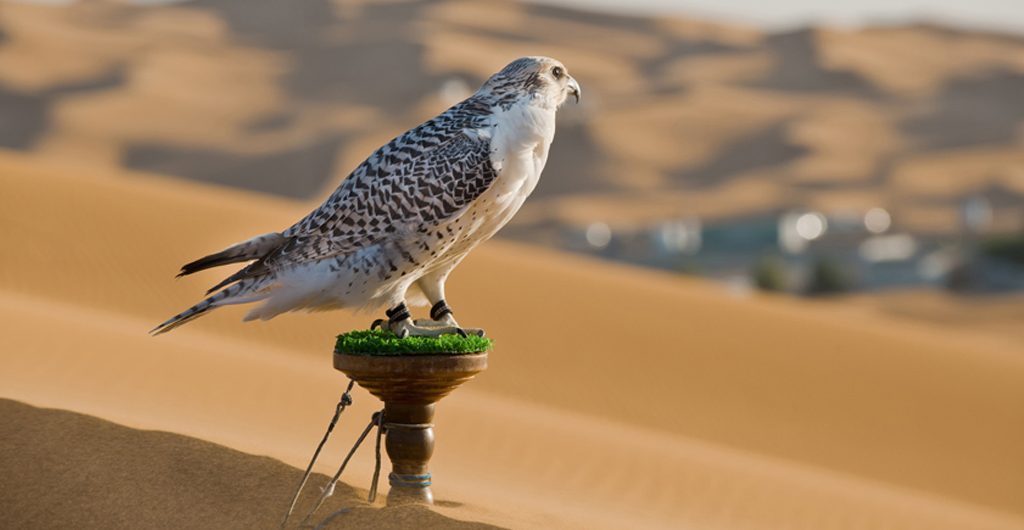The annual gathering showcases the pride of place animals enjoy in Emirati culture
The Wings of Sahara Bird Show presented by the Al Ain Zoo at the Abu Dhabi International Hunting and Equestrian Exhibition (Adihex). Victor Besa / The National.
The Wings of Sahara Bird Show presented by the Al Ain Zoo at the Abu Dhabi International Hunting and Equestrian Exhibition (Adihex). Victor Besa / The National.
For those who live in the mazes of asphalt, concrete, glass and steel that form its glitzy metropolises, it is easy to forget that the UAE is, at its heart, a country with strong connections with nature and the animal kingdom. But regular attendees of the annual Abu Dhabi International Hunting and Equestrian Exhibition (Adihex) know better. The gathering, which kicked off on Saturday and runs until September 8, is the largest of its kind in the region and showcases the pride of place animals – particularly camels, falcons, sighthounds and horses – enjoy in Emirati culture, the result of centuries-old traditions of camping, hunting and fishing.
Few know the importance of maintaining animal population numbers better than hunters and fishermen. So it is fitting that the theme of this year’s event references both sustainability and heritage, echoing the longstanding relationship between hunting and wildlife conservation. At last year’s Adihex, conference organisers dedicated a whole day, in partnership with Unesco, to the protection of vulnerable species.
Although some have a difficult time believing it, the reality is that ethical hunting practices are a critical part of conservation efforts around the world. Aside from funding these efforts through the fees they pay, hunters can play an important role in controlling animal populations and helping authorities maintain a balanced ecosystem. In many cases, regulated hunting is one of the most effective tools governments have in ecosystem management.
Ethical hunting practices are a critical part of conservation efforts around the world
Hunting and other activities involving animals are important for another reason, too. They encourage intimate awareness of our species’ relationship with others that share this planet with us. For centuries, children in the Middle East have grown up with a keen understanding of their responsibilities as custodians of nature, the food chain and the life cycle. These days, when the region’s rapid urbanisation and industrialisation have threatened many wildlife habitats, reviving this awareness is critical to reversing the damage.
Sheikh Zayed, the UAE’s Founding Father, conveyed this message best when, nearly a quarter of a century ago, in 1999, he wrote the foreword to the Environment Agency – Abu Dhabi’s Global Strategy Plan assessing the conservation needs of the saker falcon – the UAE’s national bird, commonly used for hunting – and the houbara bustard. Sheikh Zayed wrote that falconry was, first and foremost, “a constant reminder to us of the force of nature, of the inter-relationships between living things and the land they share, and of our own dependence on nature”.
This desire to avoid losing society’s proximity to the natural world is a cornerstone of the Emirates’ conservation efforts today, especially as the country prepares to host the Cop28 global climate summit in November. In recent years, the UAE has created local initiatives and helped lead international ones to rescue animal and plant species such as the houbara bustard, Arabian oryxes, mangroves and sea corals.
This level of progress would not be possible without strong engagement between national authorities, international organisations, private businesses and ordinary citizens over what wildlife means to us and how we can ensure that our relationship with it continues to thrive. This week, in Abu Dhabi, that conversation continues at Adihex.

